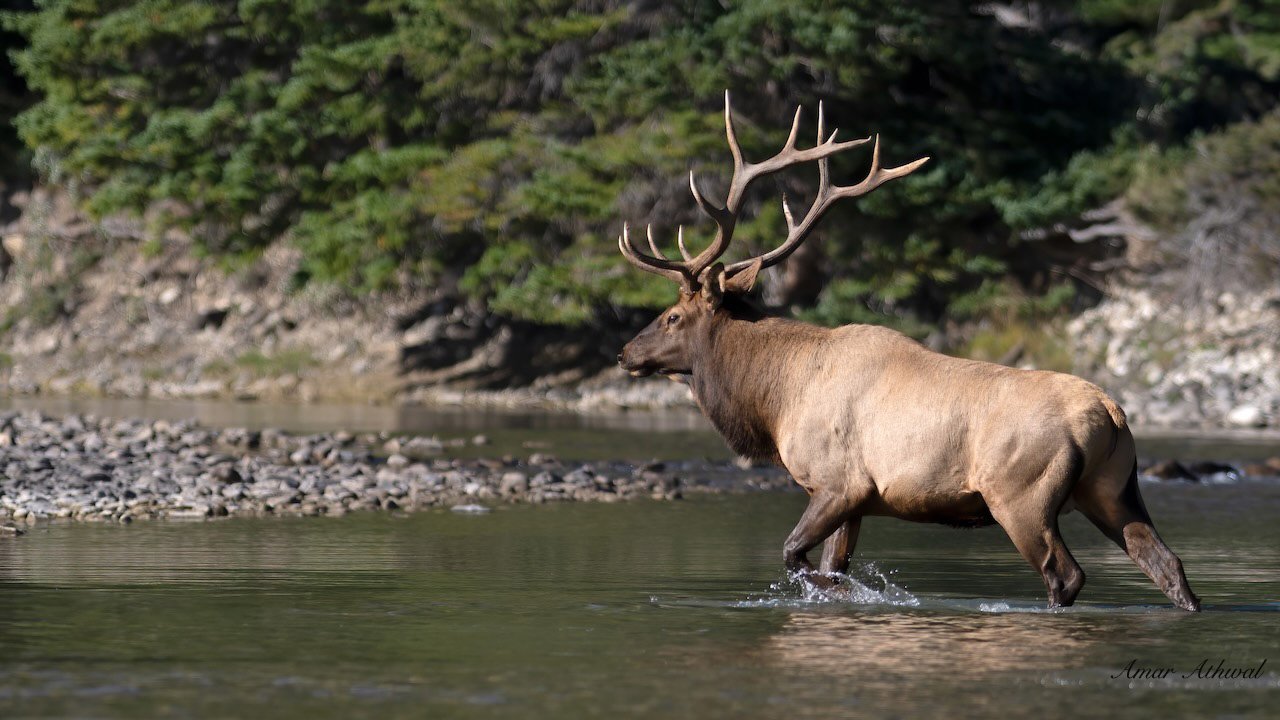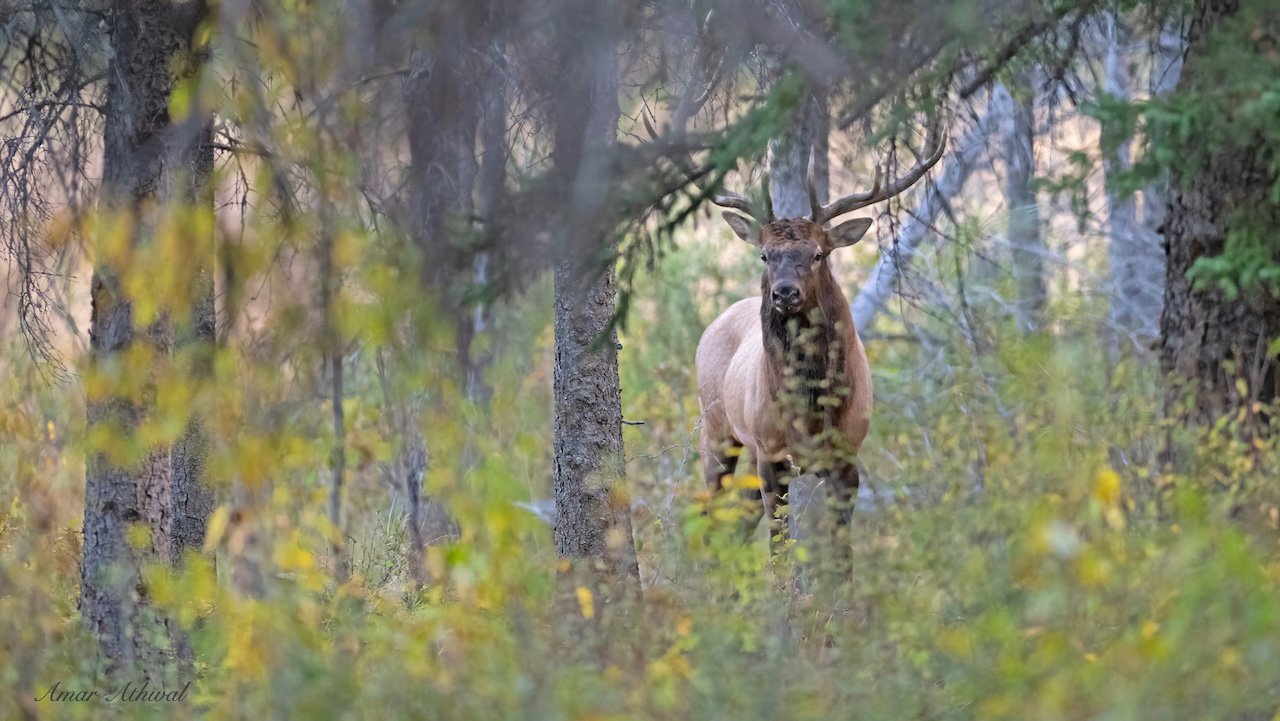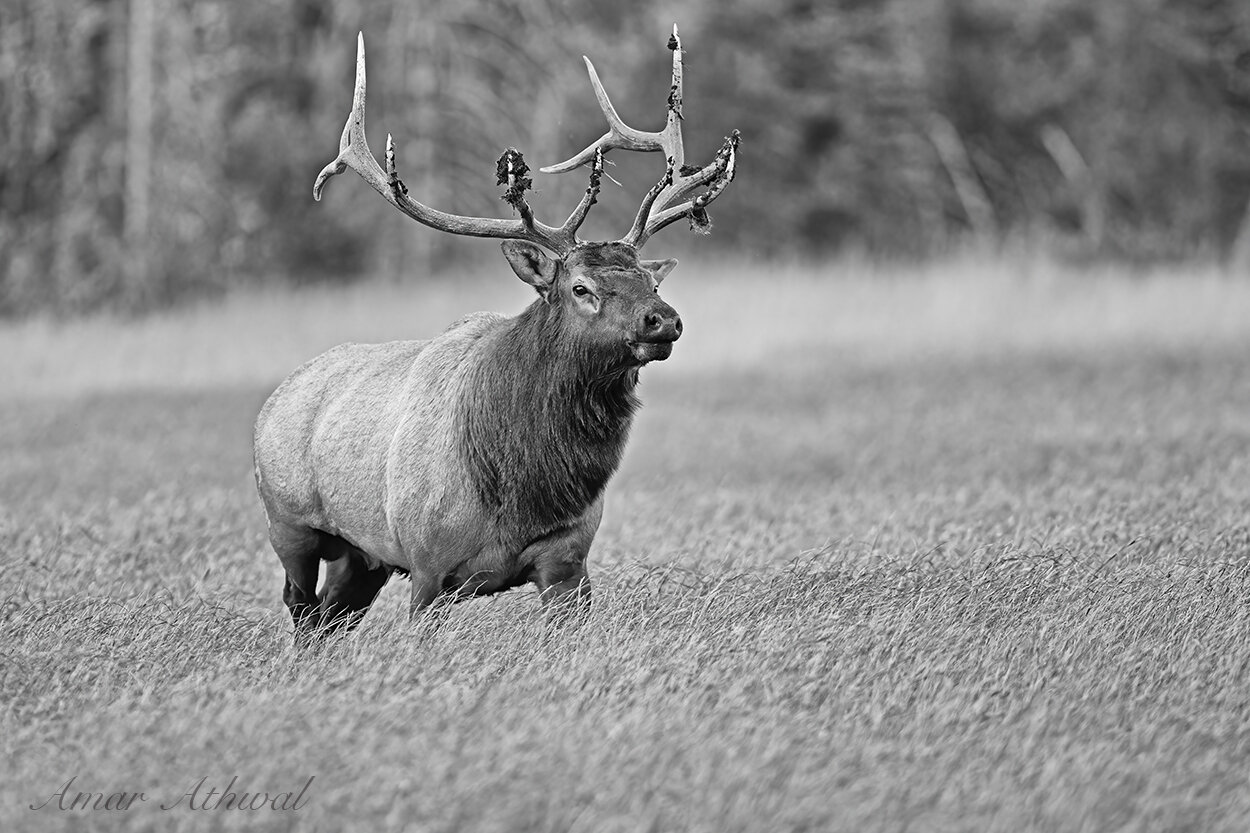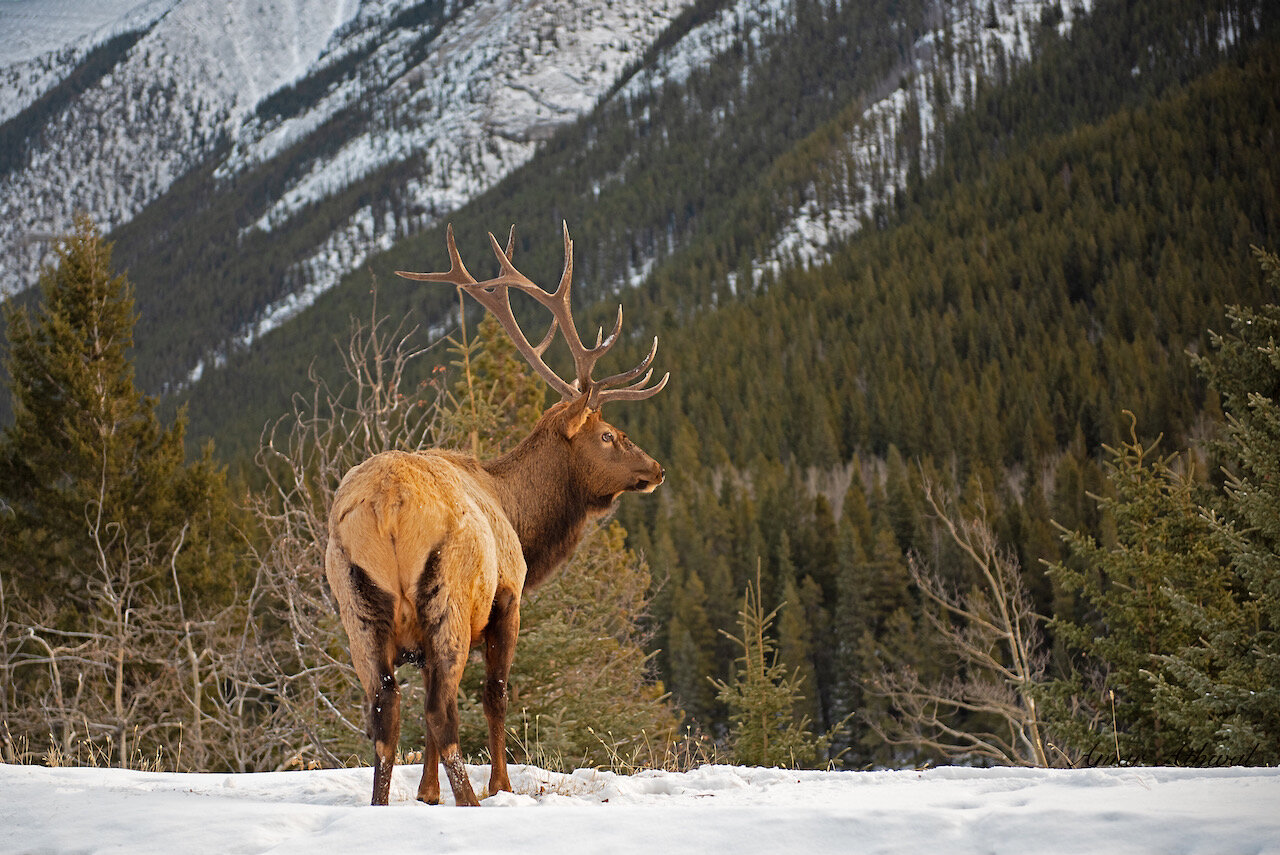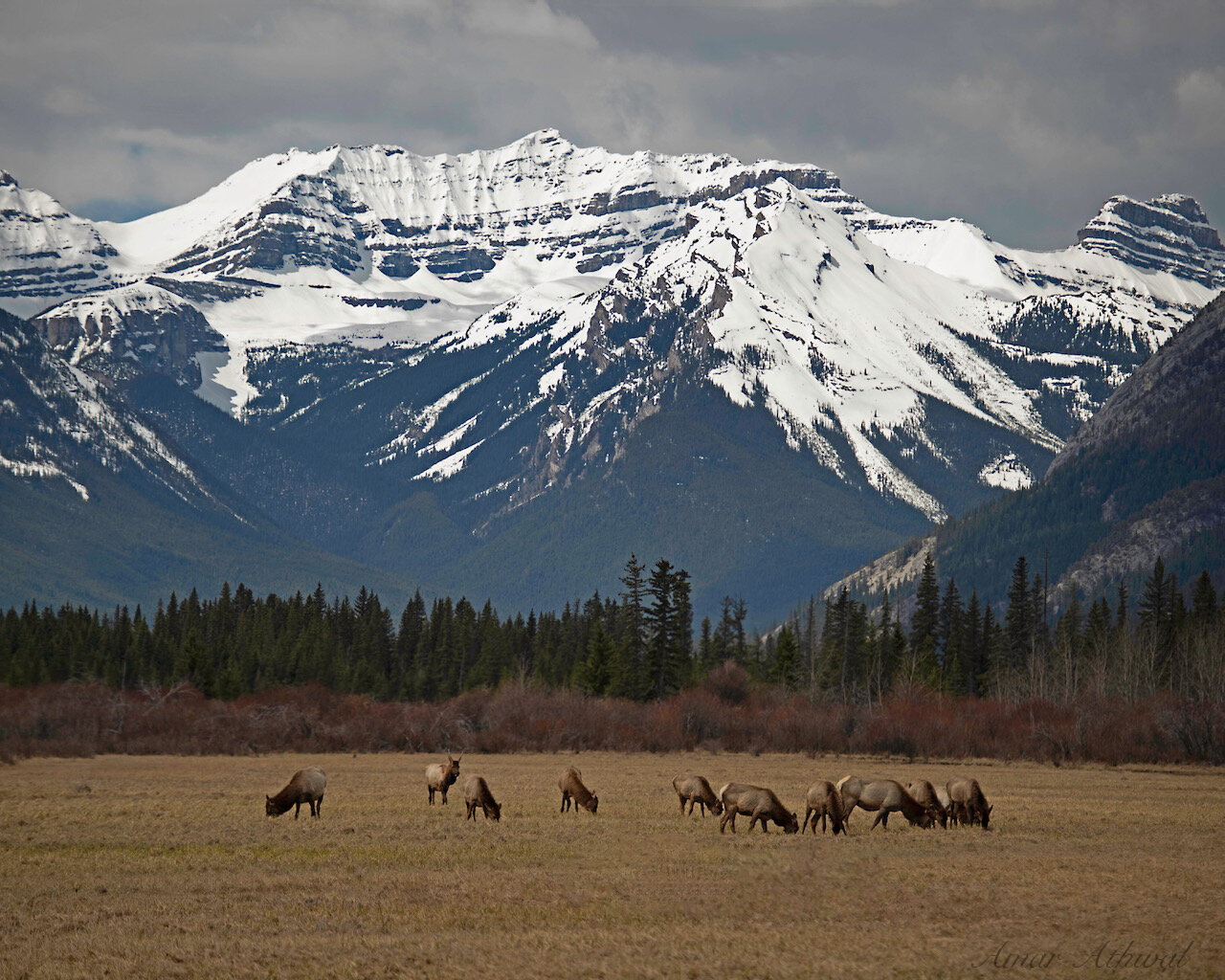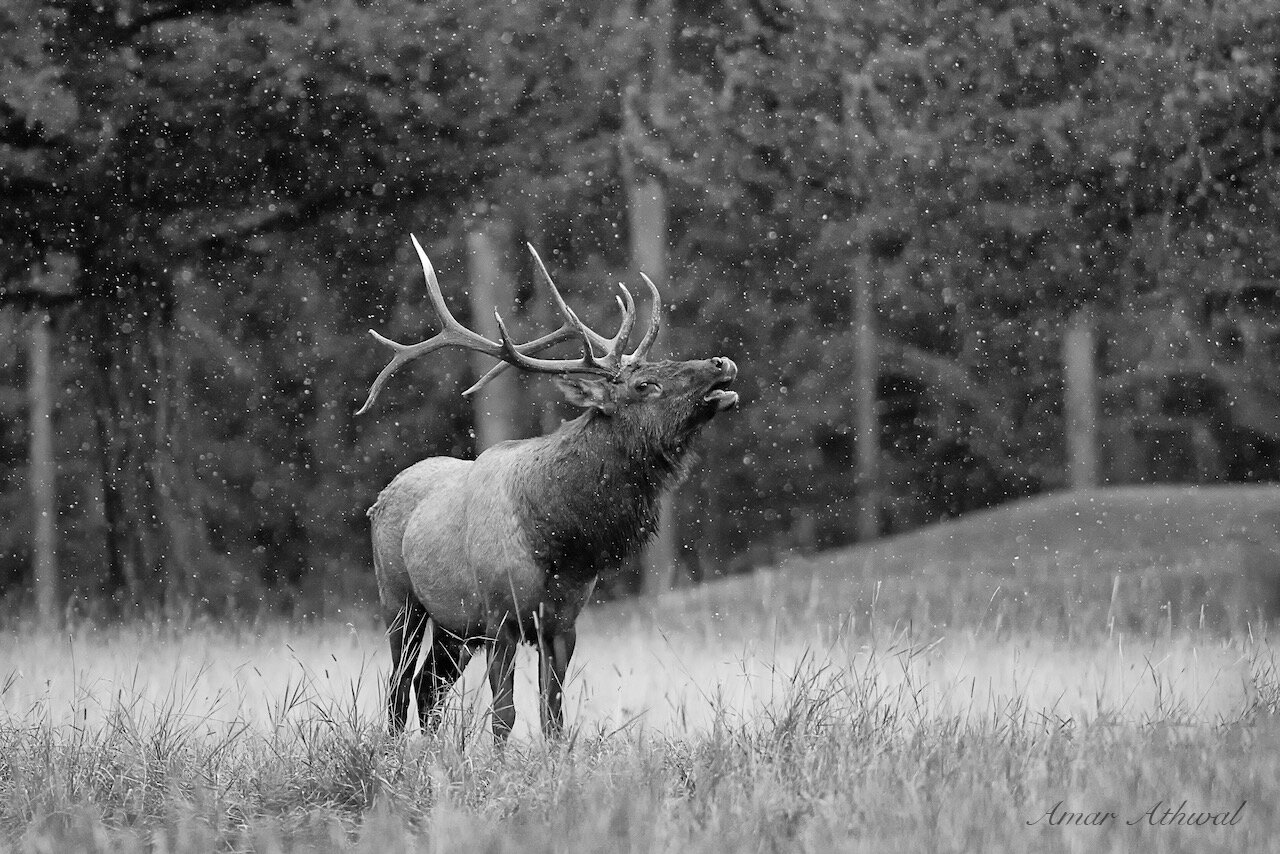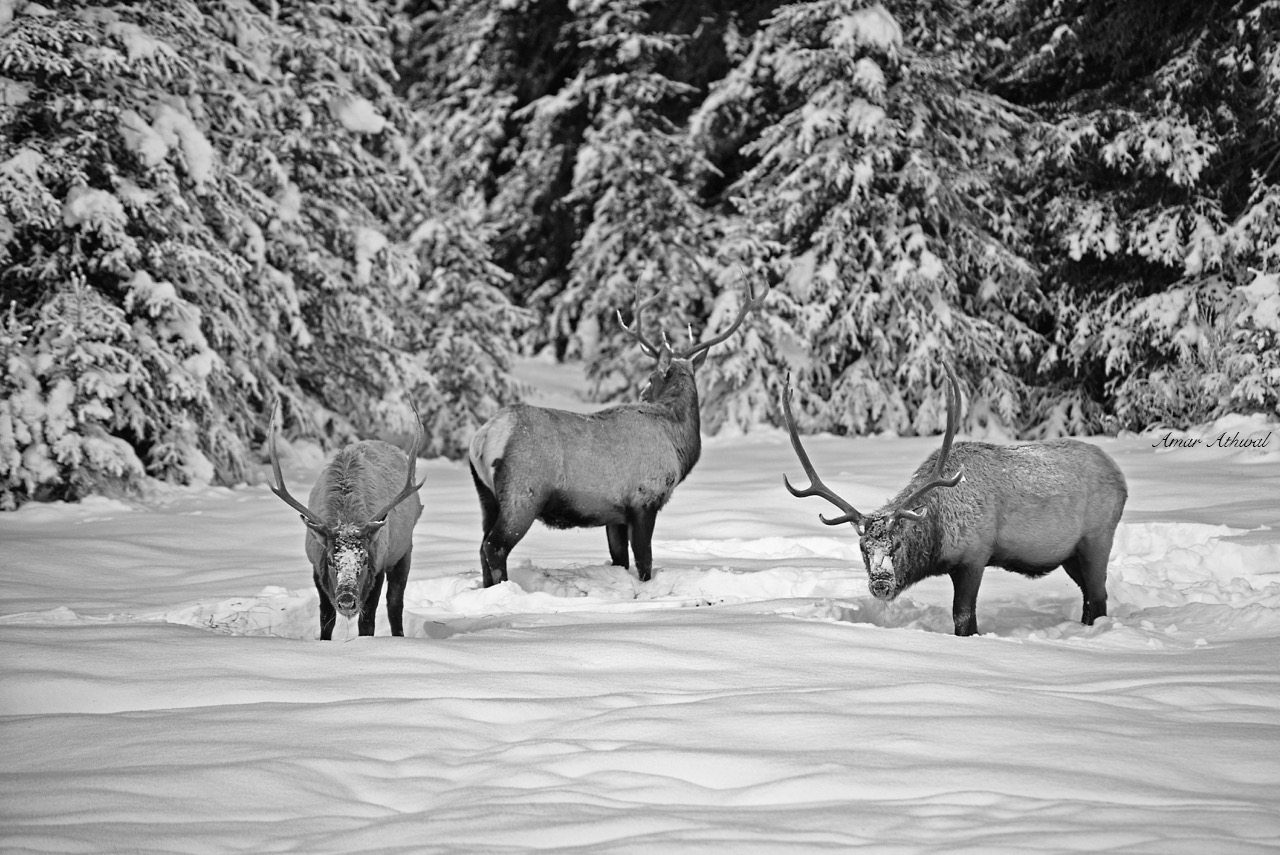It wasn’t a cold winter like in the old days. Yes, we had a cold snap in February and snowstorms in March, but overall, the average temperature was above normal, and total snowfall was below average for a typical winter.
Still, it was a challenge for this elk—and others in the mountains—to survive the season. They wait for the time when they can finally start feeding on green vegetation in spring. With the warmer temperatures already arriving, new leaves are just beginning to take their first steps coming out, and green blades of grass are starting to appear in some parts of the valley.
But it wasn’t just the elk—and other members of the deer family—that had to endure another winter. They also had to face predators, including a wolf pack of over ten members. That pack had a significant impact, bringing the elk population down over the winter and continuing to do so.
This bull, like the rest, still has to wait until nutrients are once again available in abundance for another season.


